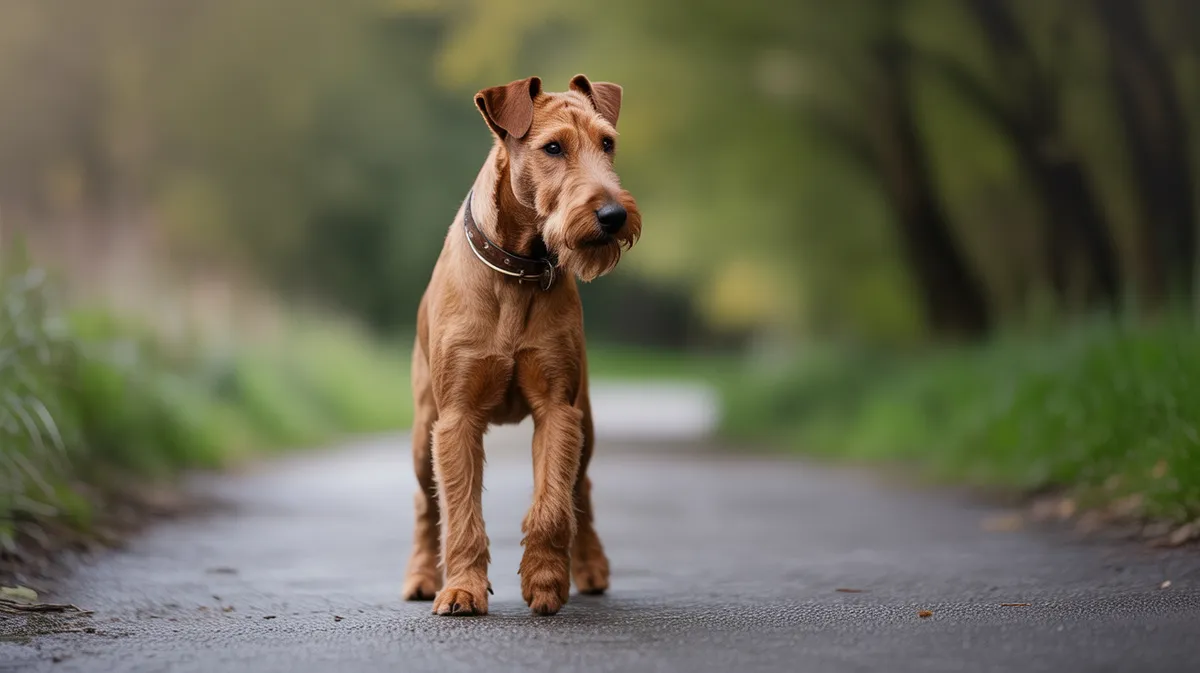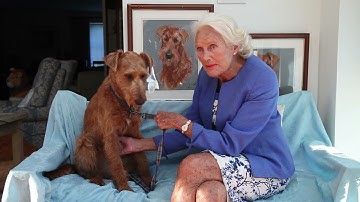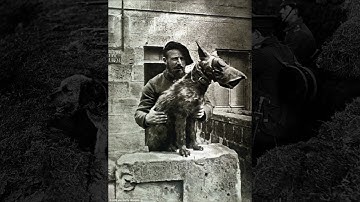
Irish Terrier
Canis lupus familiaris

Meet the Irish Terrier
The Irish Terrier is a medium-sized, wiry-coated dog breed known for its bold personality and striking red coat. Originating in Ireland, it is one of the oldest terrier breeds and was historically used for hunting, guarding, and companionship. Irish Terriers are noted for their intelligence, loyalty, and energetic nature, making them excellent family pets and versatile working dogs. They are spirited, affectionate, and often fearless, with a reputation for being both protective and playful.
Classification
Mammal
Habitat
Domestic (Human environments, rural and urban)
Diet
Omnivore
Lifespan
12-15 years
Conservation
Least Concern
Weight
25-27 pounds (11-12 kg)
📖Fascinating Facts
Oldest Terrier Breeds
The Irish Terrier is considered one of the oldest terrier breeds, with records dating back to the 1870s in Ireland.
Versatile Workers
These dogs historically worked as hunters, vermin controllers, and guard dogs, showcasing great versatility.
War Heroes
Irish Terriers were used as messenger dogs during World War I, praised for their courage and reliability under fire.
📋Detailed Description
The Irish Terrier is a medium-sized, athletic dog, typically standing 45–50 cm (18–20 in) at the shoulder and weighing 11–13 kg (24–29 lbs). Its most distinctive feature is a dense, wiry, and weather-resistant red coat, which ranges from golden red to deep chestnut and provides protection in harsh climates. The breed has a long, flat head with a strong jaw, small V-shaped ears that fold forward, and dark, expressive eyes conveying intelligence and alertness. Irish Terriers are renowned for their high energy levels, agility, and stamina, traits that historically made them effective vermin hunters and farm guardians. They display a bold, inquisitive temperament and are known for their loyalty and affectionate bonds with family members. Socially, they are often assertive with other dogs but gentle and playful with children, making them versatile companions. Their keen senses and quick reflexes are complemented by a strong prey drive, a legacy of their working origins. The breed matures relatively slowly, both physically and mentally, often retaining a puppy-like exuberance well into adulthood. Irish Terriers are highly trainable but require consistent, positive reinforcement due to their independent streak.
💡 Did you know?
The Irish Terrier is sometimes called the 'Daredevil' of the dog world because of its fearless and adventurous temperament.
🔬Research & Sources
Wikipedia Summary
The Irish Terrier is a dog breed from Ireland, one of many breeds of terrier. The Irish Terrier is considered one of the oldest terrier breeds. The Dublin dog show in 1873 was the first to provide a separate class for Irish Terriers. By the 1880s, Irish Terriers were the fourth most popular breed in Great Britain and Ireland.
Last Modified: 11/6/2024
🎭Behavior & Social Structure
Irish Terriers are active, intelligent, and highly alert, requiring regular mental and physical stimulation. Historically bred for hunting small game and vermin, they exhibit strong prey drive and investigative behaviors, often digging or chasing moving objects. They are known for their courage and tenacity, sometimes showing assertiveness toward unfamiliar dogs, though early socialization can mitigate this. Daily routines should include vigorous exercise, such as long walks, play sessions, or agility training, to prevent boredom and destructive behaviors. Irish Terriers are highly people-oriented, forming close attachments to their owners and thriving on companionship. They are vocal when alerting to strangers but are not excessive barkers. Their problem-solving abilities and adaptability make them suitable for various canine sports, including obedience, tracking, and earthdog trials. When properly socialized, they are gentle and protective with children, though their exuberance may be overwhelming for very young kids.
👶Reproduction & Life Cycle
Irish Terriers reach sexual maturity between 8 and 12 months, though responsible breeding is typically delayed until at least 18–24 months to ensure full physical and behavioral maturity. The breed is monoestrous, with females coming into heat approximately twice per year. Mating is usually supervised to ensure compatibility and minimize aggression, as terriers can be assertive. The gestation period averages 63 days. Litters typically consist of 4–8 puppies. Mothers are attentive, providing extensive care, warmth, and grooming for their offspring during the first three weeks. Breeders often begin early socialization and gentle handling of puppies by three weeks of age to foster stable temperaments. Weaning occurs gradually between 4 and 6 weeks, with full independence by 8–10 weeks. Irish Terriers are known for their strong maternal instincts and generally have few reproductive health issues, though responsible breeding practices are essential to avoid hereditary conditions.
🛡️Adaptations & Survival
The Irish Terrier's wiry, double-layered coat is a key adaptation, offering protection from rain, cold, and rough terrain. Their lean, muscular build and deep chest provide endurance and agility, essential for chasing and cornering prey. The breed's strong jaw and pronounced muzzle are well-suited for gripping and dispatching small animals. Their keen sense of smell and acute hearing enhance their effectiveness as hunters and watchdogs. Behaviorally, their intelligence and problem-solving skills allow them to adapt to a wide range of environments, from rural farms to urban homes. The breed’s boldness and independence are evolutionary traits selected for working alone or with minimal human direction. Their high pain threshold and resilience are also noted, making them capable of working in challenging conditions.
🎨Cultural Significance
The Irish Terrier holds a special place in Irish culture, often referred to as the 'Daredevil' of the canine world for its fearless nature. It has been celebrated in Irish folklore as a symbol of loyalty and bravery. During World War I, Irish Terriers served as messenger and sentinel dogs, valued for their courage and reliability under fire. The breed has appeared in literature and art, representing Irish resilience and spirit. In rural Ireland, they were prized as all-purpose farm dogs, adept at hunting, guarding, and companionship. The breed is recognized as one of Ireland’s native dog breeds and is promoted by the Irish Kennel Club as a national treasure.
🔬Recent Research & Discoveries
Recent genetic studies have confirmed the Irish Terrier’s status as one of the oldest terrier breeds, with mitochondrial DNA analyses indicating divergence from other terriers in the early 19th century. Ongoing research focuses on hereditary health conditions, particularly cystinuria and hypothyroidism, with breed clubs supporting biobanking and genetic screening initiatives. Behavioral studies highlight the breed’s high trainability and problem-solving abilities, making them subjects in canine cognition research. There is also interest in the breed’s resilience and adaptability, with studies examining their suitability as therapy and assistance dogs. Conservation efforts by breed clubs emphasize maintaining genetic diversity and promoting responsible ownership.
🎥Wildlife Videos

Irish Terriers - Haystack and Powder
Perfect January day in the Columbia Gorge with Father Haystack Murphy and Powder as they explore Rooster Rock State Park.
MorningStarProductions

We Love Irish Terriers Tribute Film
Tribute – Lucy Jackson and her son Jamie talk affectionately about their life long devotion and love for Irish Terriers.
WeLoveIrishTerriers

THE AFRICAN WILD DOG: Nature’s Most Ruthless Pack Hunter Unleashed! | Animal Documentary
THE AFRICAN WILD DOG: Nature's Most Ruthless Pack Hunter Unleashed! | Animal Documentary THE AFRICAN WILD DOG: ...
WILD WORLD - Animal Documentary

Irish Terrier in a field of Poppies - True Dogs of War
A Remembrance Day tribute to Dogs that served and died for us in war - discussed by Tom Assheton & James Jackson as part of ...
WeLoveIrishTerriers

3 Hours of The Untold Stories of British Wildlife | Our World
A wildlife documentary series, narrated by Hugh Bonneville, uncovering the hidden lives of animals across diverse habitats ...
Our World

99% of Irish Terrier Owners Don't Know This
Did you know that the Irish Terrier boasts a rich history intertwined with the green landscapes of Ireland? But what sets them apart ...
Dogs Wiz
🌍Habitat Information
The Irish Terrier typically inhabits Domestic (Human environments, rural and urban) environments. Irish Terriers have adapted to their environments with specialized features and behaviors.
Primary Habitat:
Domestic (Human environments, rural and urban)
More detailed habitat information will be available soon.
🛡️Conservation Status
The Irish Terrier is currently classified as Least Concern. Conservation efforts are crucial for preserving this species for future generations.
Common Threats:
- 🏠Habitat loss and fragmentation
- 🌡️Climate change impacts
- 🎯Hunting and poaching
- 🏭Human-wildlife conflict
⚠️Threats & Conservation Challenges
As a domestic breed, the Irish Terrier is not threatened in the wild and is classified as 'Least Concern.' However, population numbers have declined compared to their peak in the late 19th and early 20th centuries, primarily due to changing preferences in dog breeds and the rise of other terrier varieties. Genetic bottlenecks and inbreeding are concerns in some populations, potentially leading to hereditary health issues such as hypothyroidism and cystinuria. Responsible breeding programs and genetic screening are crucial to maintaining breed health. The breed is generally robust but may be sensitive to certain anesthetics and prone to skin allergies. Urbanization and reduced demand for traditional working roles have shifted the breed’s primary function to companionship, which can lead to behavioral challenges if exercise and stimulation needs are not met.
🔬Scientific Classification
Scientific Name
Canis lupus familiaris
Classification Hierarchy
🔍 About Taxonomic Classification
Taxonomic classification is a hierarchical system used by scientists to classify and organize living organisms based on shared characteristics and evolutionary relationships.
The system moves from broad categories (Kingdom) to increasingly specific ones, with each animal's scientific name typically consisting of its Genus and species.
📝Community Notes
Share your observations and insights about the Irish Terrier with our community of wildlife enthusiasts.
Join Our Community
Sign in to share your observations and connect with fellow wildlife enthusiasts.
Sign In to ContributeNo community notes yet
Be the first to share your observations about the Irish Terrier!
Explore Irish Terrier
Select a tab above to learn more about this amazing animal.
📸Photo Gallery
No photos available for this animal yet.
🌟Discover More Wildlife
Continue your journey of discovery with more fascinating animals from our database
